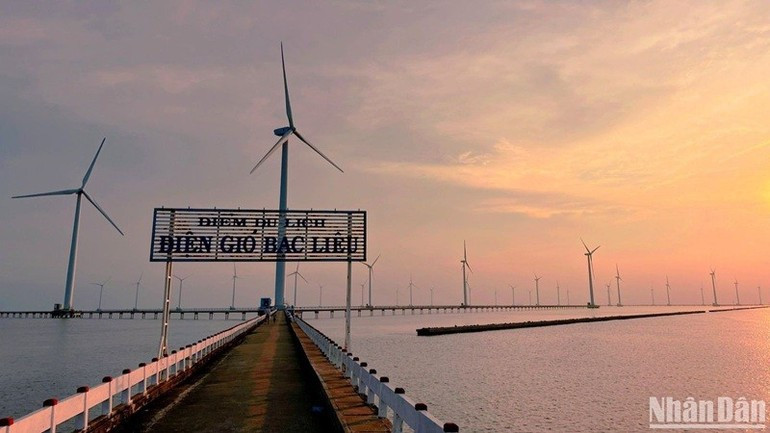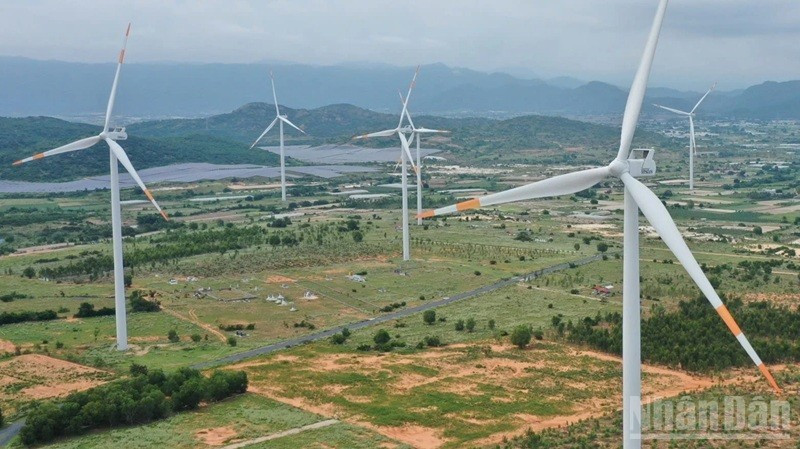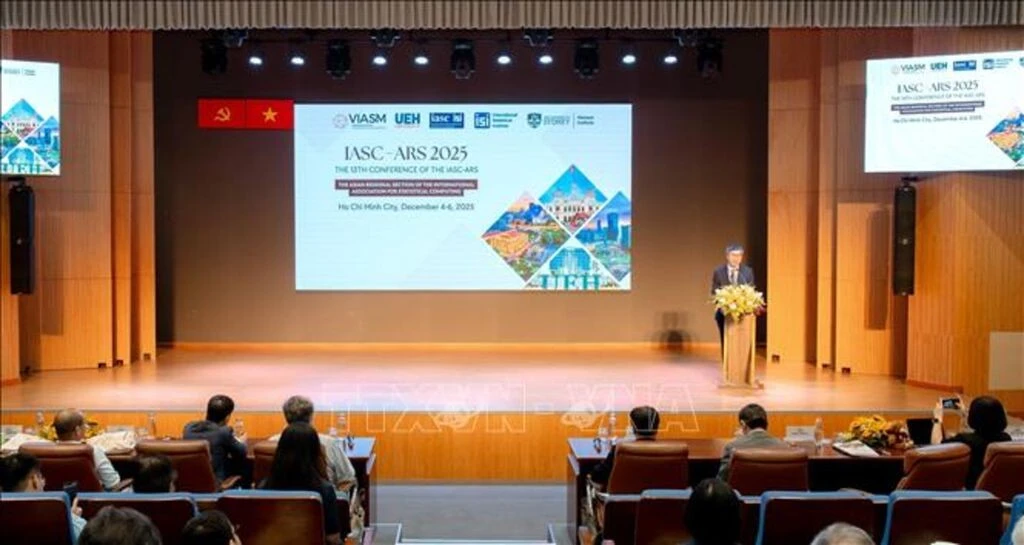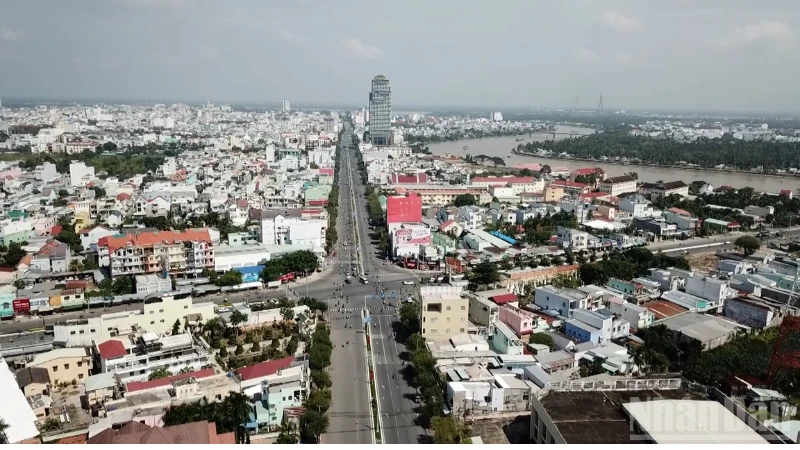Cluster-based renewable energy development
Under the National Power Development Plan for the 2021–2030 period, with a vision to 2050 (Plan VIII), Viet Nam aims to establish two interregional renewable energy industrial and service hubs.
These hubs will serve as focal points for key activities, including: electricity generation from renewable sources, renewable energy equipment manufacturing, green hydrogen production, development of logistics infrastructure for offshore wind power, provision of auxiliary services, creation of green industrial parks, and promotion of research, development and workforce training.
As proposed by the Ministry of Industry and Trade, the northern hub will be located in localities such as Hai Phong, Quang Ninh and Thai Binh, with potential for expansion into surrounding areas.
This hub will encompass factories producing wind and solar power equipment, logistics services, specialised seaports supporting construction, operation and maintenance of renewable energy projects, low-carbon industrial zones, and facilities for research and training of skilled personnel in clean energy.
Similarly, the southern hub is expected to be established in Ninh Thuan, Binh Thuan, Ba Ria–Vung Tau and Ho Chi Minh City—areas with exceptional potential for wind and solar power, as well as developed port infrastructure.
To realise this strategic vision, the Ministry of Industry and Trade established a working group in September 2024 under the Just Energy Transition Partnership (JETP). Co-chaired by the Electricity Regulatory Authority and the German Embassy, this group is tasked with promoting strategic planning and development of renewable energy hubs.
As a critical first step, the Energy Support Programme (ESP) of the German Development Cooperation (GIZ) conducted a study reviewing existing renewable energy hub models worldwide, aiming to provide reference materials and share international experience for Viet Nam’s development of renewable energy industrial and service centres.
Entitled “Developing renewable energy hubs in Viet Nam – International case studies: Insights into offshore wind development”, the study focuses on building a domestic offshore wind value chain as the foundation for developing integrated and systematic renewable energy hubs.
The study’s objective is to provide a basis for planning and implementing future hubs, including the selection of suitable locations for local value chain expansion, identification of core components of integrated renewable energy hubs, and development of policy frameworks to promote their implementation in Viet Nam.
According to international experience cited in the report, renewable energy production rarely concentrates in a single location. Instead, successful renewable energy hubs typically emerge as flexible industrial clusters across regions.
In these clusters, original equipment manufacturers (OEMs) play a central role, with tier‑2 and tier‑3 suppliers developing naturally to form a robust value chain.
Sharing Germany’s experience, Philipp Munzinger, Director of GIZ’s Energy Support Programme (ESP), noted that the country has developed renewable energy hubs that focus on research and training for the offshore wind sector.
However, Munzinger also emphasised that these hubs do not need to be concentrated in a single area, but can be organised as distributed models tailored to the conditions of each locality.

David Jacobs, a member of GIZ’s international advisory panel, stressed that renewable energy equipment manufacturing hubs should be planned in line with existing supply chains and specific logistical conditions.
Offering recommendations for Viet Nam, Jacobs suggested that areas with high electricity transmission demand—such as the northern region—would be ideal locations for developing such hubs, contributing to addressing energy supply shortages. Additionally, these hubs should aim to supply electricity for green industrial production.
GIZ’s report also suggested that specialised training centres for renewable energy should be located near manufacturing hubs, while universities and vocational institutions could be more widely distributed across the country.
Offshore wind as the cornerstone
The study places special emphasis on localising the offshore wind value chain. GIZ experts view this as a key driver for building robust and sustainable renewable energy hubs in Viet Nam.

Offshore wind is not only seen as a new direction in energy transition but also as a foundation for the development of a green, circular and sustainable economy. It offers the potential to create sustainable jobs, enhance national value, and make effective use of the oil and gas sector’s existing infrastructure.
With a technical potential of up to 600 GW, Viet Nam currently leads ASEAN in offshore wind. The revised Plan VIII sets targets of 17 GW by 2035, 139 GW by 2050, and 240 GW for new energy production by 2050.
According to GIZ’s report, when planning for renewable energy equipment manufacturing hubs, priority should be given to areas favourable to offshore wind development. However, other locations should also be considered to optimise manufacturing based on each renewable technology’s specific needs.
Ralf Leutz, a GIZ international consultant, shared that in Europe, many renewable energy production hubs have mechanisms to ensure their electricity supply comes directly from renewable sources.
Thus, GIZ recommends adopting a comprehensive planning approach based on the characteristics of renewable energy hubs. These hubs should be designed as regional industrial ecosystems integrating various elements: large-scale renewable energy equipment manufacturing—especially at seaports for offshore wind; electricity generation (e.g., solar combined with storage or wind farms) to supply nearby industries through direct power purchase agreements (DPPAs); training and research facilities tailored to local development needs; and industrial policies to attract investment to these areas.
GIZ recommends initially assessing potential provinces or regions in Viet Nam suitable for offshore wind manufacturing hubs, followed by value chain analyses for other renewable technologies. Consideration should also be given to developing separate manufacturing centres for other technologies or introducing policies to encourage co-location with offshore wind manufacturing hubs.
Munzinger described the idea of building renewable energy hubs as a positive step. However, he cautioned that implementation must be phased and focused, avoiding an overly ambitious, all-at-once approach.
The ESP Programme Director advised Viet Nam to leverage its existing strengths, including government support, existing knowledge and resources, and in particular, the already developed seaport system, to gradually build and expand a sustainable offshore wind value chain.
Tang The Hung, Deputy Director General of the Electricity Regulatory Authority, stated that the concept report on renewable energy hubs for Viet Nam is only the initial and preliminary step, helping to guide future development plans.
The Electricity Regulatory Authority will continue working with GIZ to gather further feedback from stakeholders and finalise the report. Hung noted that once the final version is complete, it will be submitted to the government with proposals for appropriate policy frameworks to promote the development of renewable energy hubs.
















